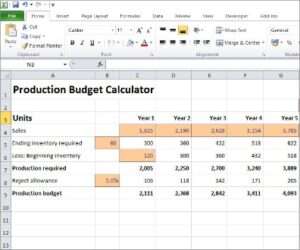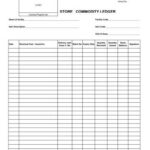Day Sales Outstanding Ratio: Formula and Why It Matters
Content
- The key metric to watch: Days Sales Outstanding (DSO)
- How to Improve Cash Flow and Lower DSO Through Automation
- Related Resources
- Adapt Your Financial KPIs To Your Business Objectives
- How to Reduce Days Sales Outstanding in Accounts Receivable
- DSO = $50,000/$80,000 x 31 days = 19.375 days sales outstanding
- AI-Based Collections Software Solutions

As a starting point, we highly recommend you download ourfree DSO calculator. This tool uses a DSO calculation formula to give you a clearer indication on current cash flow, accounts receivable and credit sales. You’ll gain a better grip on your DSO and will be able to monitor it all in one place for complete peace of mind and ease. At the end of the day, if you focus on your days sales outstanding and continue to work on your strategy, you’llimprove your cash flow.
- DSO is a critical business metric because it determines the financial situation and growth.
- But the average DSO per sector can vary from one country to another.
- Unless you’re in the business of lending people money – you should reduce your DSO.
- The way you chase your open invoices also determines the quality of your product to some extent.
- Although it varies depending on the business type and structure, DSO numbers under 45 days are considered low.
Given the vital importance of cash flow in running a business, it is in a company’s best interest to collect its outstanding accounts receivables as quickly as possible. Companies can expect, with relative certainty, that they will be paid their outstanding receivables. But because of the time value of money principle, time spent waiting to be paid is money lost. The calculation of days sales outstanding involves dividing the accounts receivable balance by the revenue for the period, which is then multiplied by 365 days. Accounts ReceivablesAccounts receivables is the money owed to a business by clients for which the business has given services or delivered a product but has not yet collected payment. They are categorized as current assets on the balance sheet as the payments expected within a year.
The key metric to watch: Days Sales Outstanding (DSO)
Comparing your company’s DSO against internal and SaaS benchmarksprovides valuable insight into how well you are performing relative to expectations. You don’t want to over-index on competitor benchmarks, but it’s helpful to have the context as a baseline. While a DSO of 45 is considered good with small businesses, it may differ with companies depending on size and financial structure. It takes Apple Ice cream company an average of 22.5 days to receive payment.
- Although maintaining a low DSO is a sign of an effective company’s cash collection process, it’s important that your relationships with customers are prioritized.
- While evaluating a specific DSO value can provide quick information about a company’s cash flow, examining trends in the DSO over time can be more beneficial and impactful to a business’s processes.
- This discount can be easily offset by speeding up cash flow, savings on loan fees and better discounts from creditors.
- Low interest rates and easy credit allow companies to take their eye off the ball when it comes to DSO management.
This means that it takes the company an average of 300 days to collect payment from its customers after making a sale. Make payment easy – offering multiple payment options that are quick and easy can go a long way in improving DSO. If customers have to “cut a check” or call in to process a credit card payment, you’re putting up barriers that may delay payment. On a more detailed level, accounts receivable staff may also rely on DSO to assess trends with individual customers and perhaps identify possible cashflow issues early on.
How to Improve Cash Flow and Lower DSO Through Automation
This is a part of an effective credit analysis and will clarify the customer’s ability to pay for goods and services. Negative impact on cash flow.When you have outstanding invoices, it means that https://kelleysbookkeeping.com/ there is money tied up in accounts receivable instead of being available as liquid assets. This can create challenges when trying to cover operational expenses or invest in growth opportunities.
- Generally, a DSO below 45 is considered low, but this depends on the type of business you are in and the business structure that you have.
- Your accounts receivable balance shows the dollar amount you’re owed from customers in outstanding invoices.
- Let’s say an Apple Ice cream company reports a sales revenue of $500,000 for August 2022.
- A low DIO indicates that goods are sold quickly and replaced with new inventory, while a high DIO means that goods linger on shelves or in warehouses for longer periods of time before being sold again.
Most business owners compare figures quarterly or annually, not over prior time periods. The days-sales-outstanding formula divides accounts receivable by total credit sales, multiplied by a number of days in a measurement period. Days sales outstanding is the average number of days it takes a company to collect payment after a sale is made. Learn how outstanding payments can impact your business and how to improve your DSO ratio. An efficient method of reducing DSO is timely billing through fast invoicing, payment incentives, and abundant payment methods.
Related Resources
Your ideal DSO should be determined by comparing it against industry benchmarks, factoring in economic fluctuations, and your company’s capital structure as well as size. DSO needs to be calculated on a month-to-month (or period-to-period) basis to see if the trend is moving higher or lower. Let’s say company A has a sales forecast of around $20,000 in 30 days, and What Is Days Sales Outstanding? How To Calculate And Improve Dso DSO is 20. A lower DSO means a shorter cash conversion cycle, more opportunities to invest, and overall better-working capital management. If you have a higher DSO – that is, higher than your industry average – then you’ll want to reduce and improve it. Let’s take a moment to remind you that you need to calculate your company’s DSO in order to see where you rank.

If a client has been disputing an invoice, it’s likely overdue and it will weigh on your DSO month after month. Now that you know where your company stands with your Days Sales Outstanding, you can focus on improving this number. Using the countback method to calculate your Days Sales Outstanding is more accurate, but it’s also more complicated to do.
Adapt Your Financial KPIs To Your Business Objectives
Check out how collection automation helped Side improve its AR process. To that effect, the DSO is a key indicator of the financial health of your company. Companies should also regularly review and update policies on when to send invoices and make sure that those policies are being followed.

However, what’s considered a high or low DSO for a company is largely dependent on the industry in which it operates. For instance, the agriculture industry relies on relatively fast payments compared to industries that are not affected by weather or spoilage. Comparing a DSO calculation to previous periods can assist in finding market trends, enabling companies to anticipate customer performance, such as late payments. Here, we see it took your customers an average of 50 or so days to pay their invoices. The DSO is assessed in comparison with the DPO , the other component of the WCR, which measures the number of days the company has to pay its debts to its suppliers. If the former is higher than the latter, it creates a cash flow gap that can, in the long run, put the company in debt.
